Tom's Hardware Verdict
The Thermaltake Toughpower GF1 850W is an excellent product, but the recent US tariffs highly affected its price tag, and this is the main reason behind its restricted availability, in the US market.
Pros
- +
Full power at 47 degrees Celsius
- +
High build quality
- +
Good overall performance
- +
Efficient
- +
Fully modular
- +
2x EPS and 6x PCIe connectors
- +
HDB fan
- +
10-year warranty
Cons
- -
Expensive
- -
Restricted availability in the US
- -
3.3V rail's transient response could be better
Why you can trust Tom's Hardware
In a category where the Corsair RM850x and the similar capacity Seasonic Focus Plus Gold dominate, Thermaltake offers an alternative option featuring RGB lighting, excellent performance, and quiet operation, which might not be as quiet as the RM850x, but it takes the lead from Seasonic's offering. In terms of performance, the Toughpower GF1 850W is close to the Corsair and Seasonic models mentioned above. Its primary disadvantage is the restricted availability, for the moment at least, since due to the recent tariffs, Thermaltake pulled it out from all major US online US stores. Currently, you will only find it in ttpremium store at an eye-watering price.
Thermaltake's Toughpower GF1 line consists of three members with capacities ranging from 650W to 850W. They are based on a platform that is provided by Channel Well Technology. The fully modular cable design along with the quality and silent fan are two features that most gamers will appreciate.

Product Photos







When it comes to performance, Thermaltake claims that it is high enough to meet the demands of enthusiast users and overclockers, and the same goes for reliability. A ten-year warranty supports all GF1 models, providing an extended peace of mind to their future owners. Finally, the fan comes with a Hydraulic bearing, which, along with the appropriate fan speed profile, can easily lower the overall noise output to below 30 dB(A) levels.
We will take a look at the strongest member of the line, featuring 850W of power. The GF1 850W is strong enough to support a potent gaming system. It also sports a quiet operation since it scores a LAMBDA-A- rating in Cybenetics' scale, which translates to a lower than 30 dB(A) overall noise output.

Product Photos


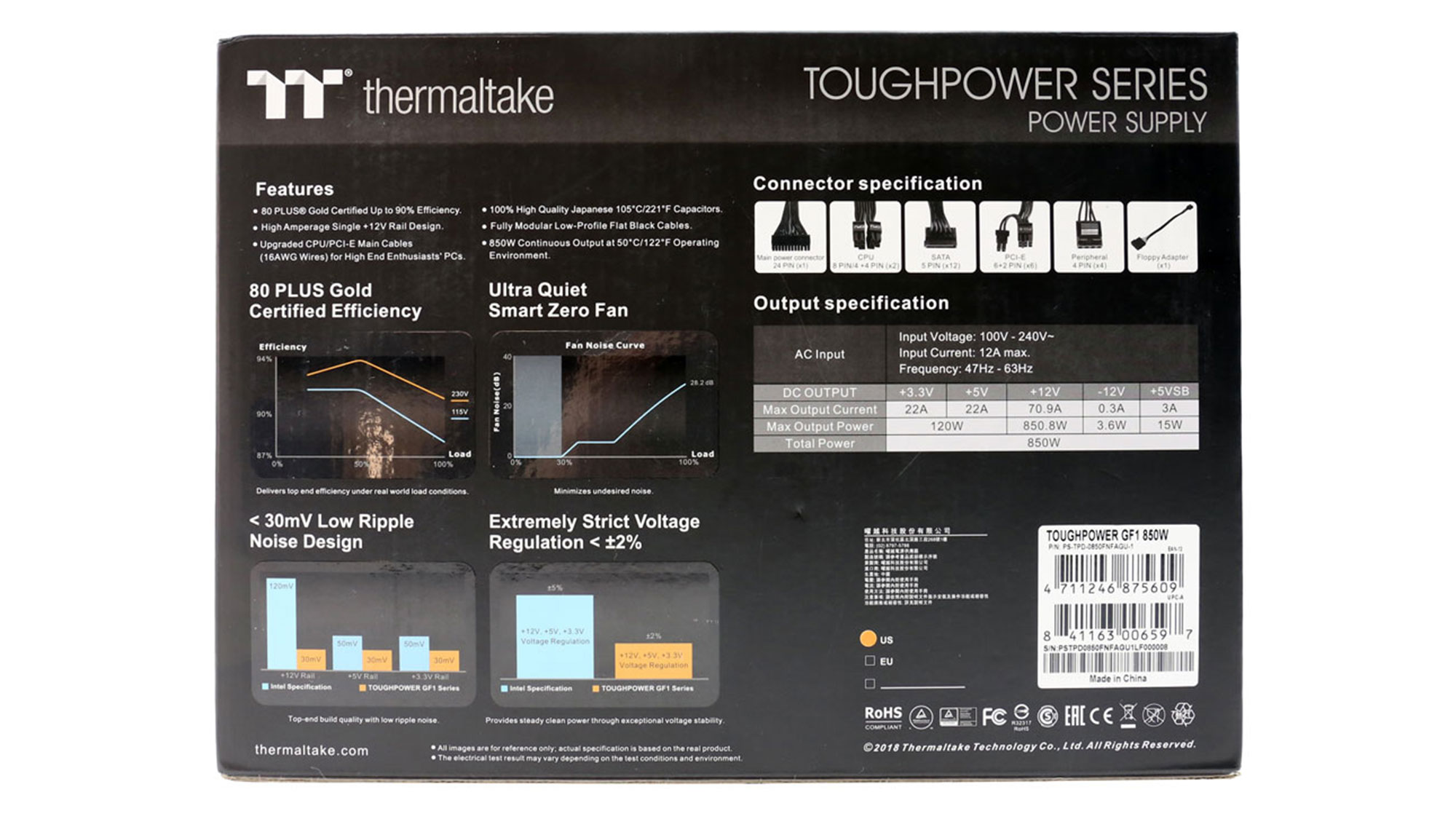




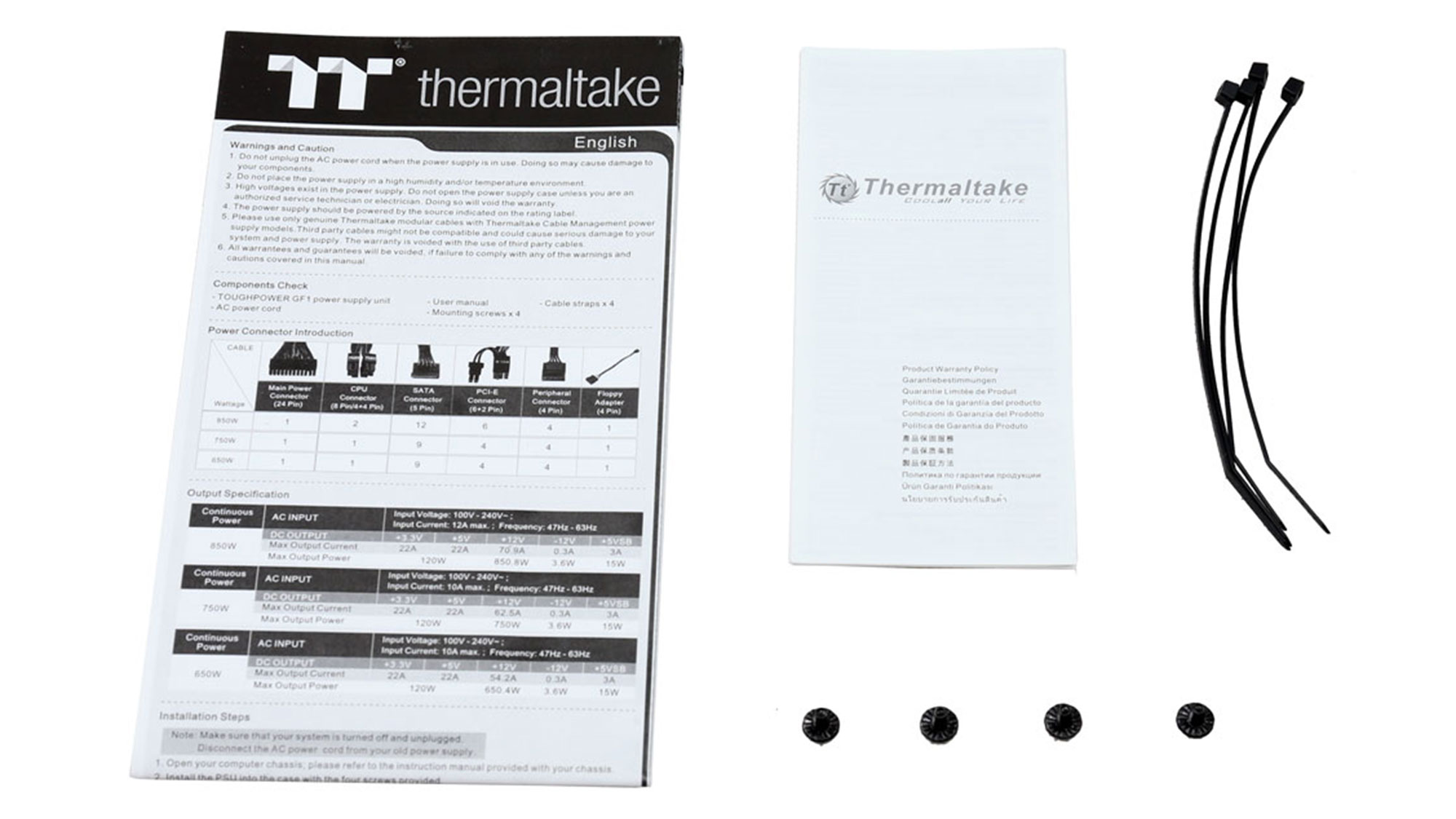
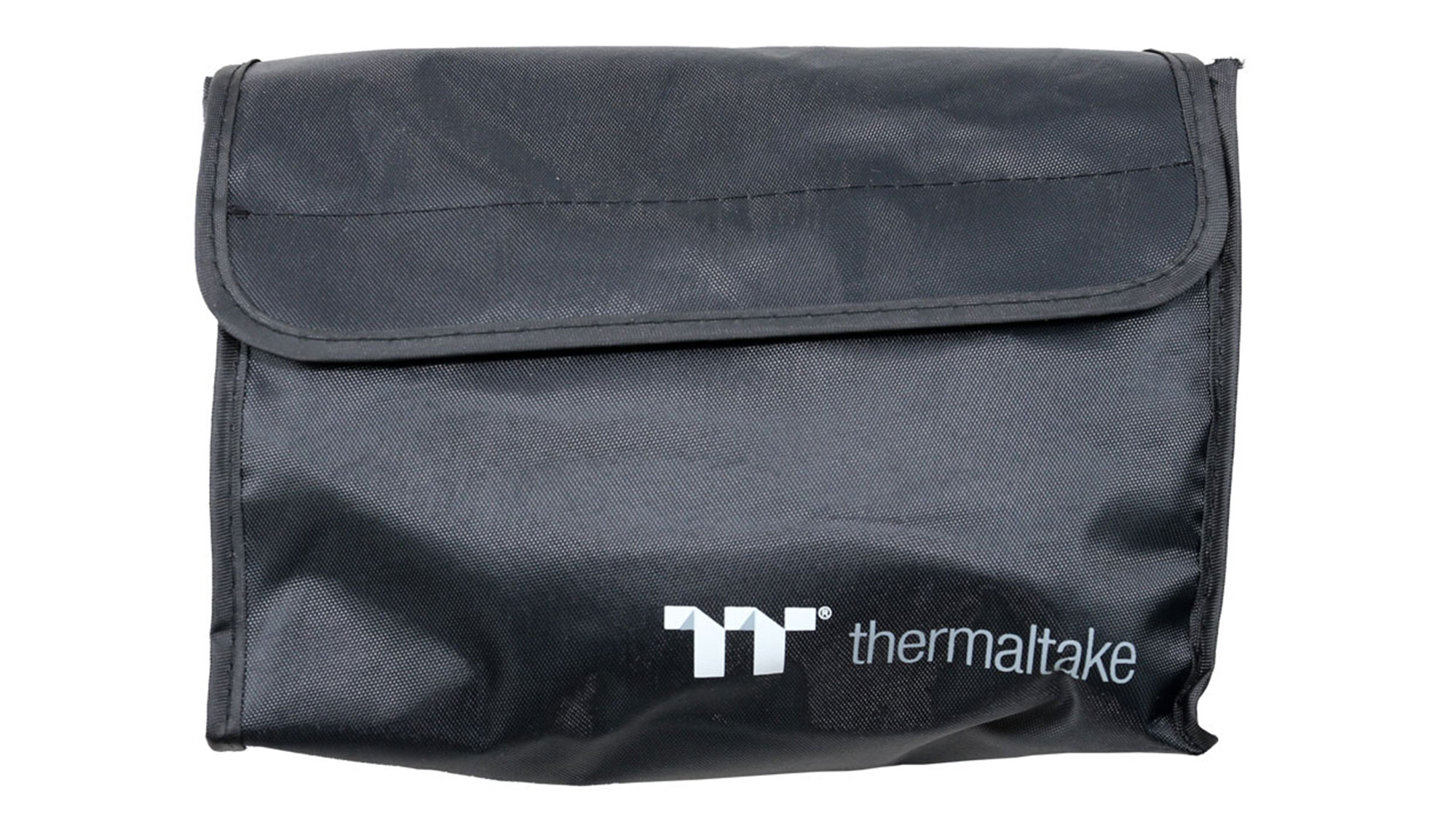
Specifications
| Manufacturer(OEM) | CWT |
| Max. DC Output | 850W |
| Efficiency | 80 PLUS Gold, ETA-A (88-91%) |
| Noise | LAMBDA-A- (25-30 dB[A]) |
| Modular | Yes (Fully) |
| Intel C6/C7 Power State Support | Yes |
| Operating Temperature (Continuous Full Load) | 0 - 50°C |
| Over Voltage Protection | Yes |
| Under Voltage Protection | Yes |
| Over Power Protection | Yes |
| Over Current (+12V) Protection | Yes |
| Over Temperature Protection | Yes |
| Short Circuit Protection | Yes |
| Surge Protection | Yes |
| Inrush Current Protection | Yes |
| Fan Failure Protection | No |
| No Load Operation | ✓ |
| Cooling | 140mm Hydro Dynamic Bearing Fan [TT-1425 (A1425L12S)] |
| Semi-Passive Operation | ✓ (selectable) |
| Dimensions(W x H x D) | 152 x 87 x 162mm |
| Weight | 1.66 kg (3.66 lb) |
| Form Factor | ATX12V v2.4, EPS 2.92 |
| Warranty | 10 Years |
Power Specifications
| Rail | 3.3V | 5V | 12V | 5VSB | -12V | |
|---|---|---|---|---|---|---|
| Max. Power | Amps | 22 | 22 | 70.9 | 3 | 0.3 |
| Watts | 120 | 850 | 15 | 3.6 | ||
| Total Max. Power (W) | 850 |
Cables & Connectors
| Modular Cables | ||||
| Description | Cable Count | Connector Count (Total) | Gauge | In Cable Capacitors |
| ATX connector 20+4 pin (600mm) | 1 | 1 | 18AWG | No |
| 4+4 pin EPS12V (650mm) | 1 | 1 | 16AWG | No |
| 8 pin EPS12V (650mm) | 1 | 1 | 16AWG | No |
| 6+2 pin PCIe (700mm+150mm) | 3 | 6 | 16-18AWG | No |
| SATA (500mm+150mm+150mm+150mm) | 3 | 12 | 18AWG | No |
| 4 pin Molex (500mm+150mm+150mm+150mm) | 1 | 4 | 18AWG | No |
| FDD Adapter (100mm) | 1 | 1 | 22AWG | No |
| AC Power Cord (1420mm) - C13 coupler | 1 | 1 | 18AWG | - |
There are plenty of connectors to deliver the unit's full power with ease. Besides a pair of EPS connectors, you also get six PCIe ones along with twelve SATA and four 4-pin Molex. The distance between the peripheral connectors is ideal at 150mm, and all cables are long enough to allow the installation in large, full-tower chassis. Finally, there are no in-line caps, which will make the cable management and routing processes much more straightforward.





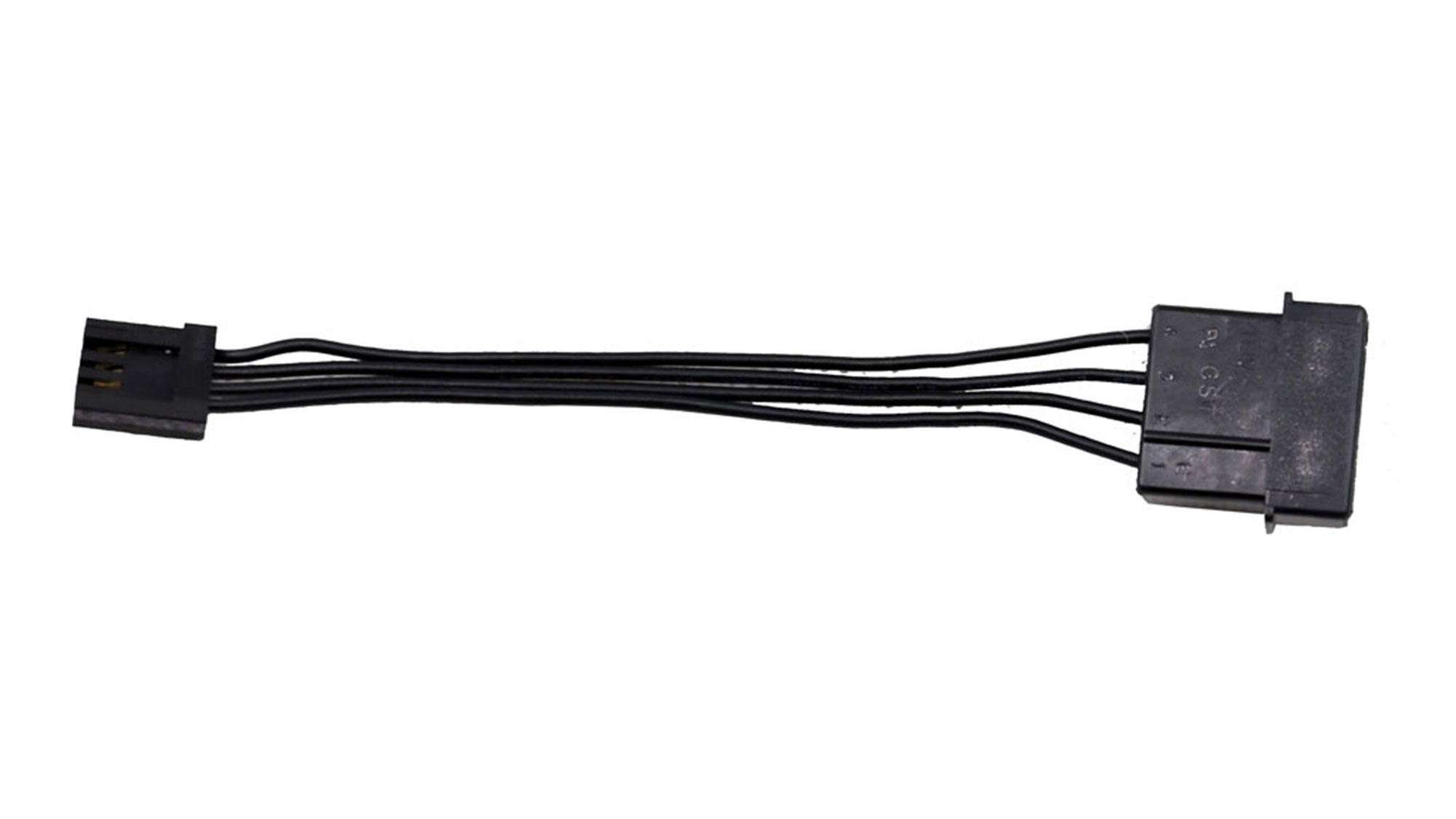

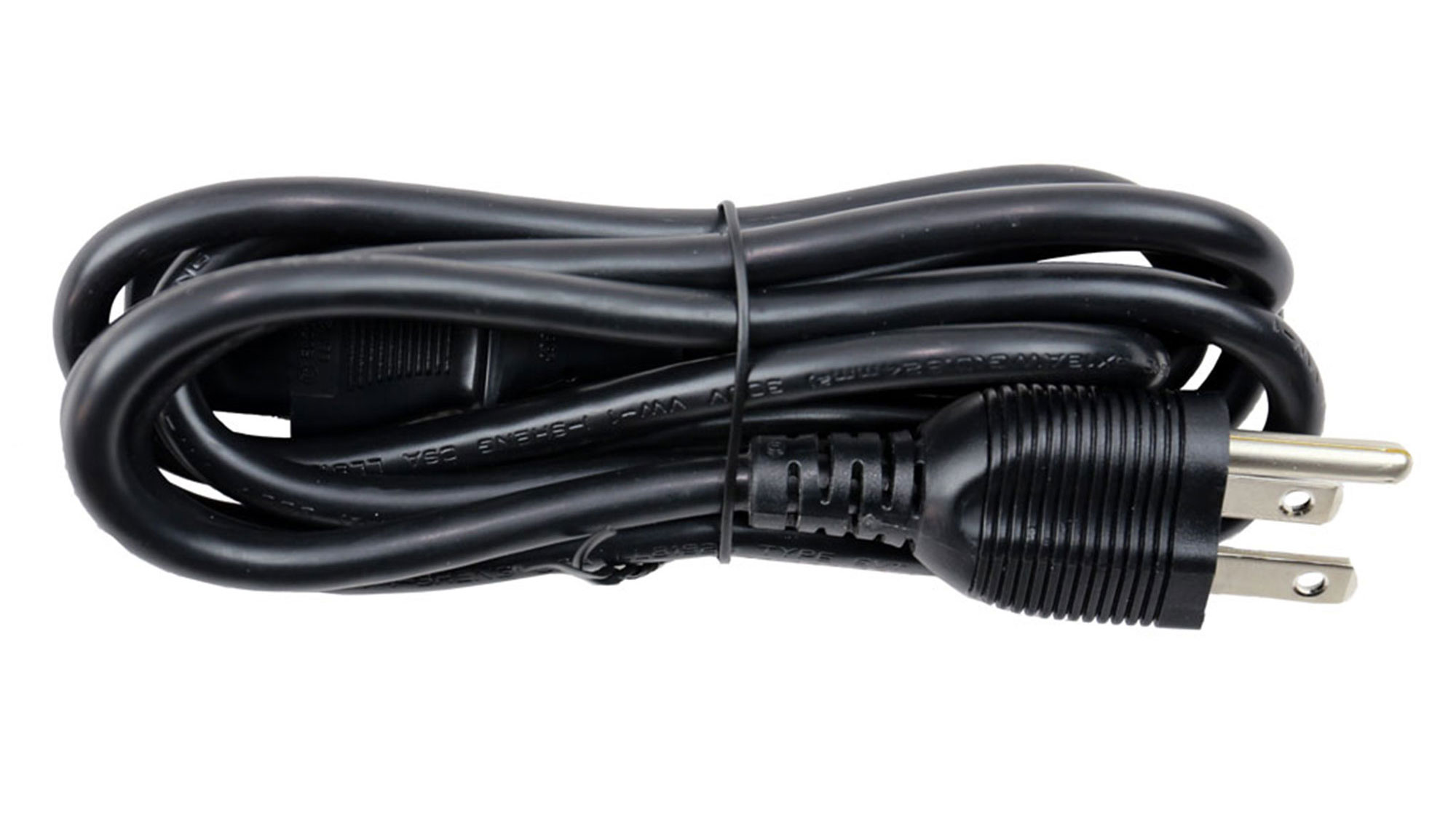
Cable Photos
Component Analysis
We strongly encourage you to have a look at our PSUs 101 article, which provides valuable information about PSUs and their operation, allowing you to better understand the components we're about to discuss.
| General Data | |
| Manufacturer (OEM) | CWT |
| PCB Type | Double Sided |
| Primary Side | |
| Transient Filter | 4x Y caps, 2x X caps, 2x CM chokes, 1x MOV, 1x Discharge IC |
| Inrush Protection | NTC Thermistor & Relay |
| Bridge Rectifier(s) | 1x GBU1506 (600V, 15A @ 100°C) |
| APFC MOSFETS | 2x Toshiba TK31A60W (600V, 30.8A @ 150°C, 0.088Ohm) |
| APFC Boost Diode | 1x CREE C3D08060A (600V, 8A @ 152°C) |
| Hold-up Cap(s) | 2x Nippon Chemi-Con (400V, 470uF each or 940uF combined, 2,000h @ 105°C, KMW) |
| Main Switchers | 2x Toshiba TK25A60X5 (600V, 25A @ 150°C, 0.14Ohm) |
| APFC Controller | Champion CM6502UHHX & CM03X Green PFC Controller |
| Resonant Controllers | Champion CM6901X |
| Topology | Primary side: Half-Bridge &a LLC converter Secondary side: Synchronous Rectification & DC-DC converters |
| Secondary Side | |
| +12V MOSFETS | 6x Infineon BSC014N04LS (40V, 100A @ 100°C, 1.4mOhm) |
| 5V & 3.3V | DC-DC Converters: 2x UBIQ QM3006D (30V, 57A @ 100°C, 5.5mOhm) & 2x UBIQ QM3016D (30V, 68A @ 100°C, 4mOhm) PWM Controllers: ANPEC APW7159C |
| Filtering Capacitors | Electrolytics: 7x Nippon
Chemi-Con (4-10,000 @ 105°C, KY), 2x Nippon Chemi-Con (5-6,000h @ 105°C, KZH), 8x Nichicon (4-10,000h @ 105°C, HE) Polymers: 29x FPCAP |
| Supervisor IC | Sitronix ST9S429-PG14 (OCP, OVP, UVP, SCP, PG) |
| Fan Model | Thermaltake TT-1425 (Hong Sheng OEM, A1425L12S, 140mm, 12V, 0.30A, Hydro Dynamic Bearing Fan) |
| 5VSB Circuit | |
| Rectifier | 1x UTC 3N60 FET (600V, 3A @ 25°C, 3.6Ohm) & PS1045L (45V, 10A) |
| Standby PWM Controller | On-Bright OB5269 |

Parts Photos



This is an analog platform, provided by CWT. On the primary side, a half-bridge topology is used along with an LLC resonant converter. On the secondary side, a synchronous rectification scheme is utilized, and two DC-DC converters handle the minor rails. The build quality is high, and the PCB looks empty on the secondary side since there are no proper heat sinks, and all power transfers are done through the PCB and not through wires, which block the airflow and are also the cause of increased energy loads.
Get Tom's Hardware's best news and in-depth reviews, straight to your inbox.

Soldering Quality





The transient filter is complete. The surge protection is handled by an MOV, while the inrush currents are restricted by an NTC thermistor and bypass relay combination.
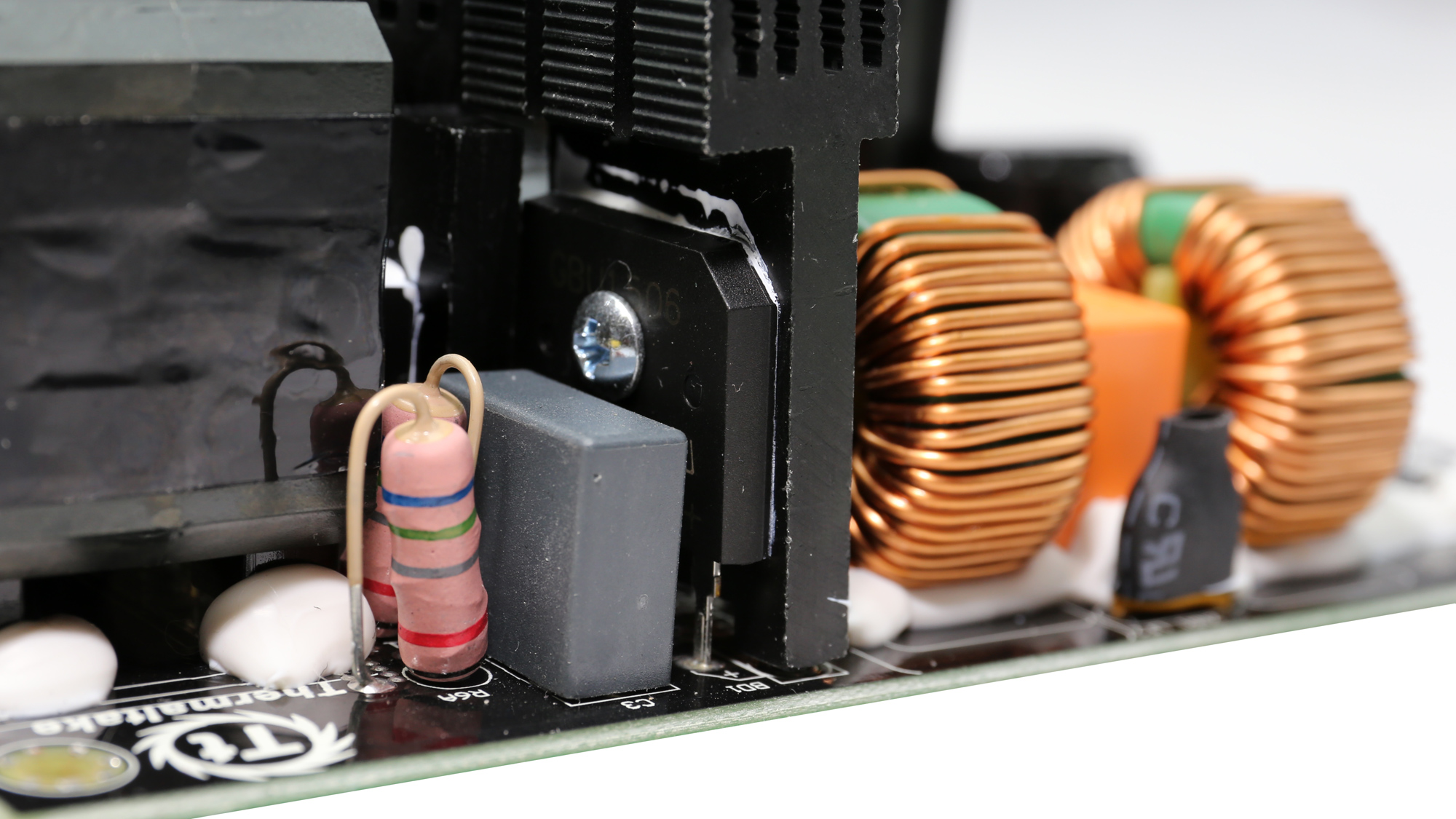
Cooling Fan
The single bridge-rectifier is bolted on a small heat sink.







The photos above depict the APFC converter and its controllers, which are installed on the solder side of the main PCB. The pair of bulk caps have enough capacity to exceed 17ms hold-up time.

The resonant controller is installed on a daughter-board.

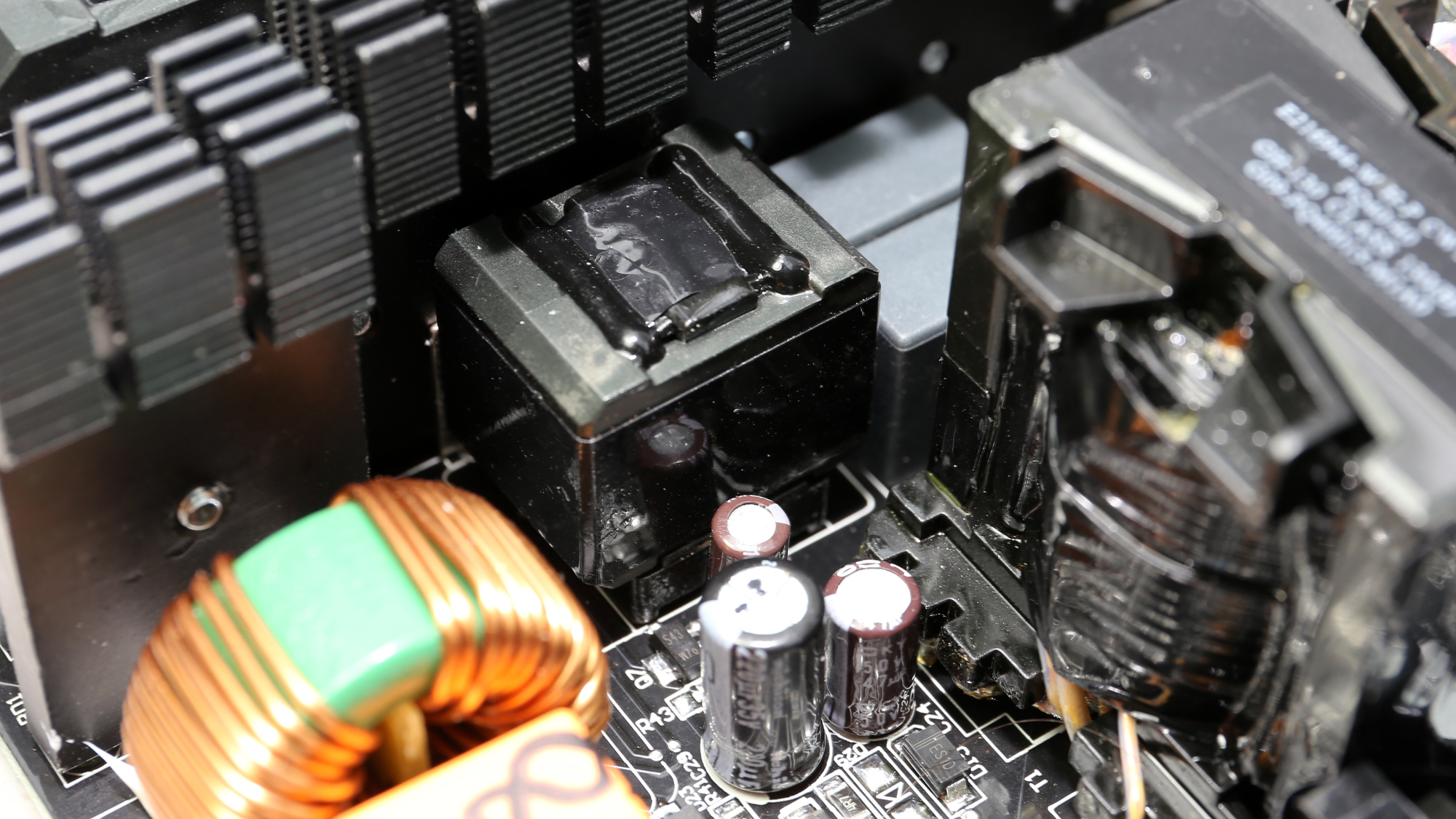
Right next to the main transformer are the resonant converter's parts, both inductive and capacitive.

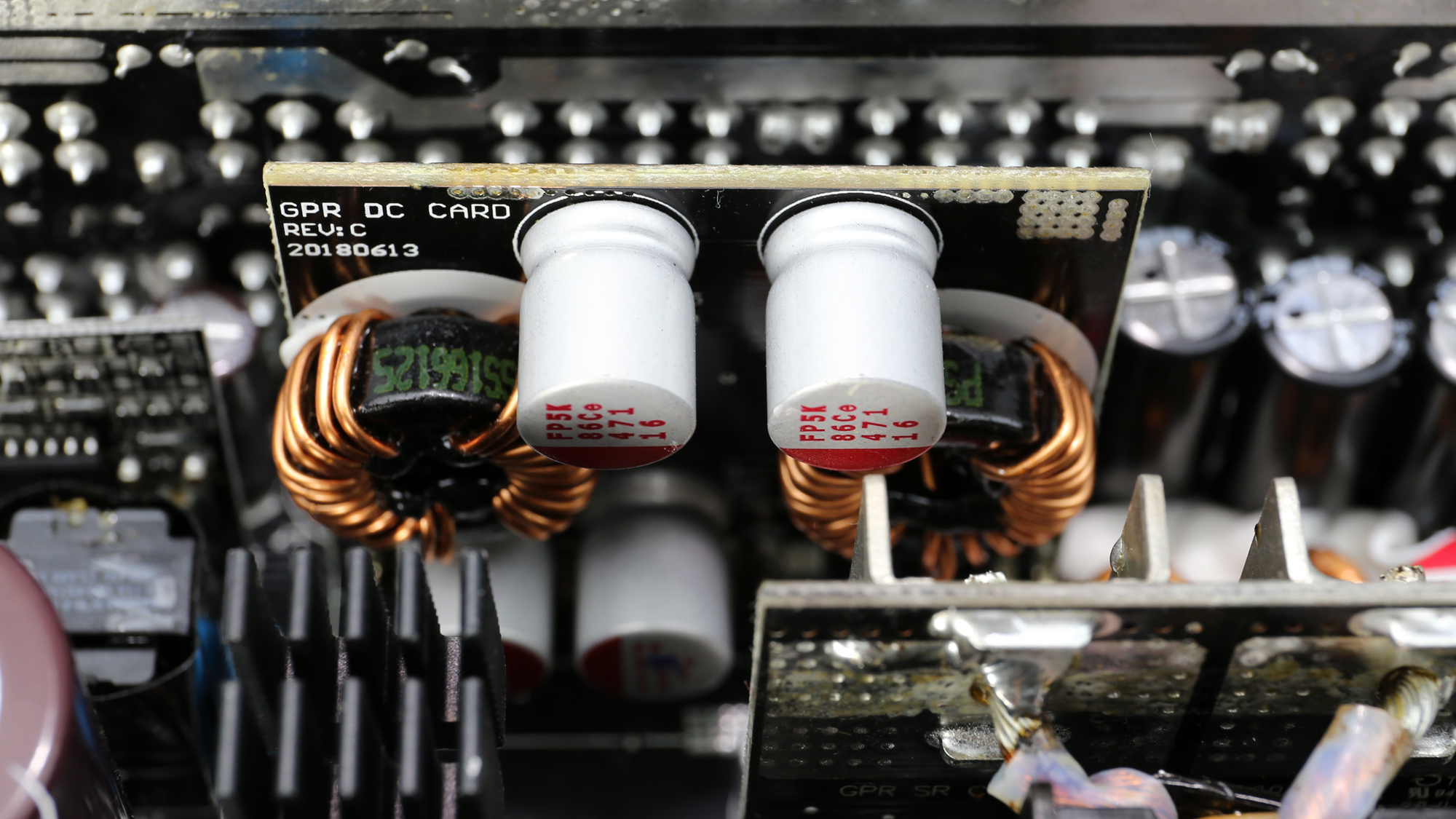
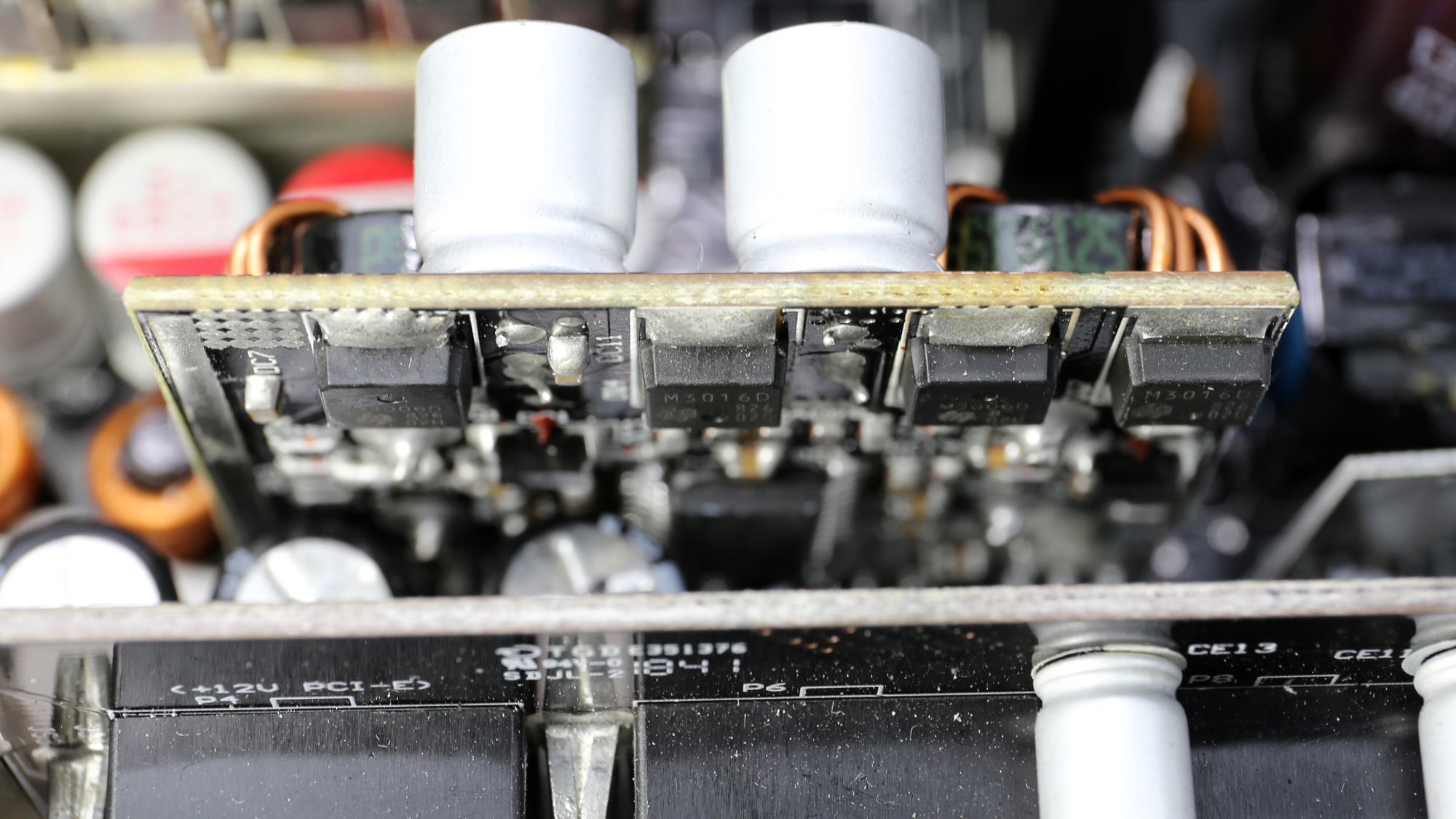
All FETs that handle the +12V rail are installed on a vertical board. Two tiny heat sinks are used to cool them off. Those FETs are highly efficient and can withstand high operating temperatures, so there is no need for massive heat sinks. Moreover, the +12V board is installed right next to the main transformer to restrict energy losses. Finally, the +12V rail power both VRMs that generate the minor rails.




The quality of the filtering caps on the secondary side is high.
MORE: Best Power Supplies
MORE: How We Test Power Supplies
MORE: All Power Supply Content


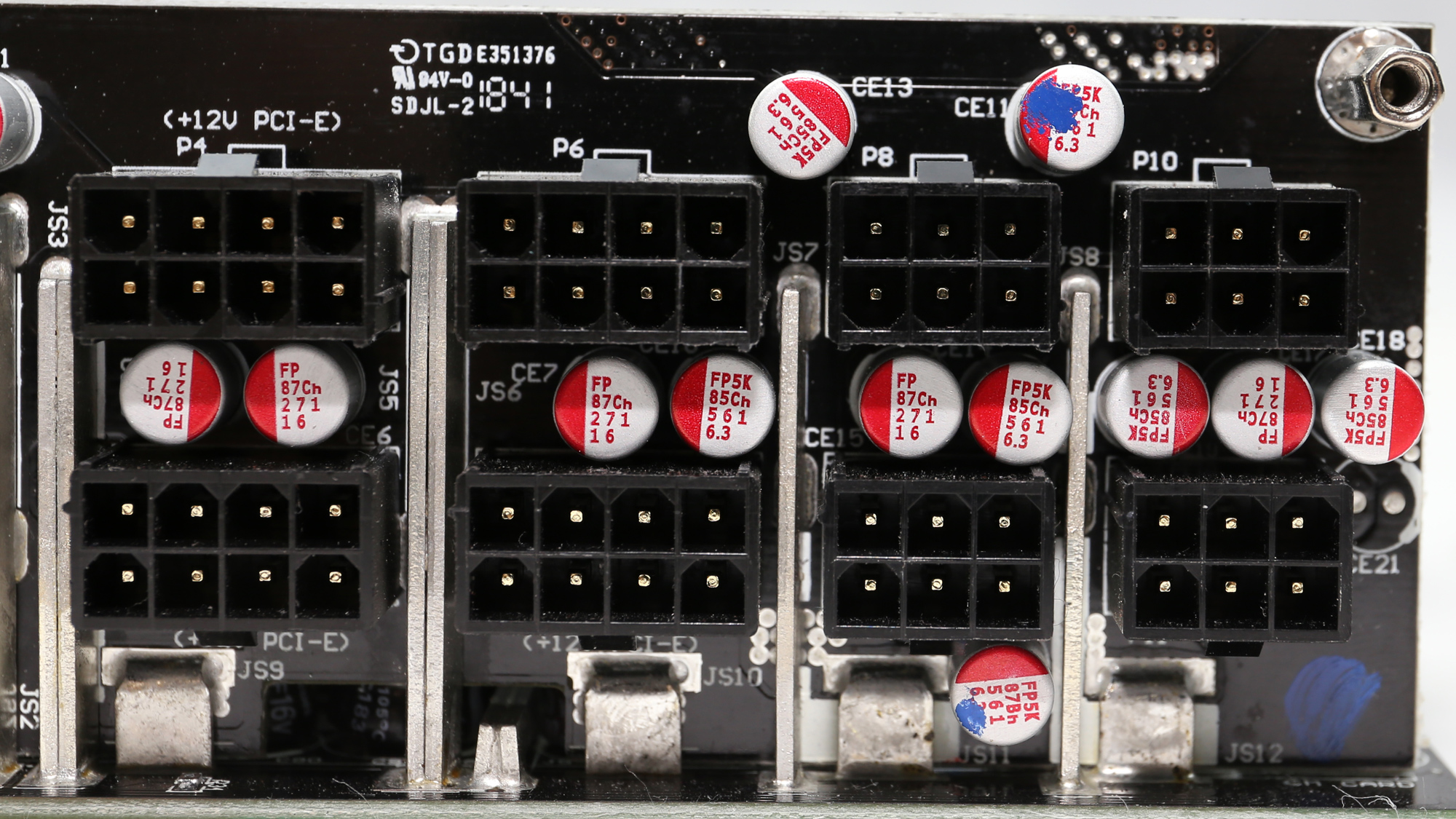
A large number of polymer caps is installed on the modular board.

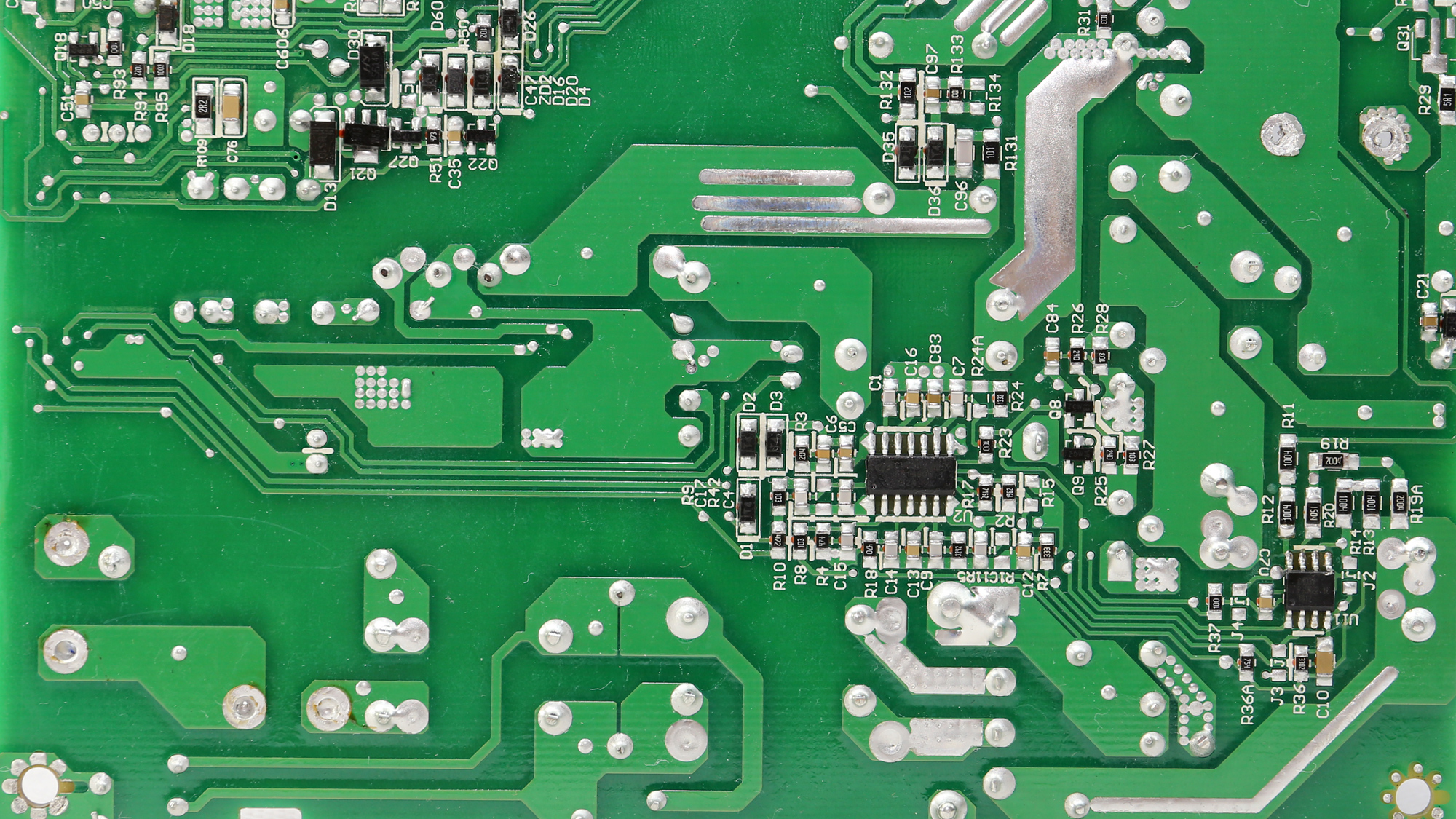

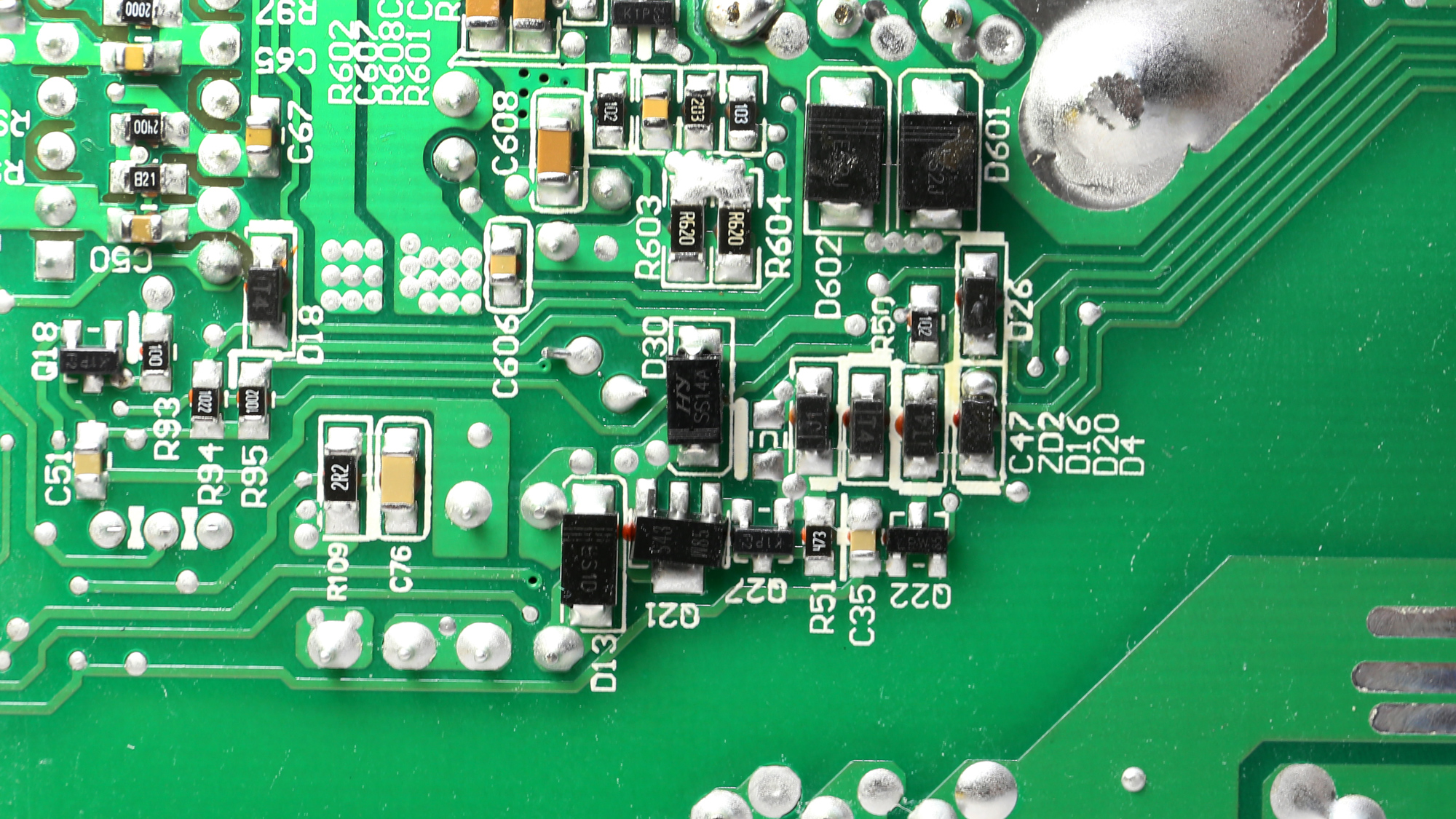

The soldering quality is good. This is usually the case with CWT's implementations.


The cooling fan uses a hydraulic bearing and has a mild speed profile.
Current page: Specifications and Part Analysis
Next Page Load Regulation, Hold-Up Time, Inrush Current, Efficiency and Noise
Aris Mpitziopoulos is a contributing editor at Tom's Hardware, covering PSUs.